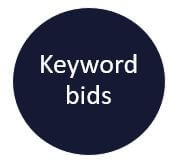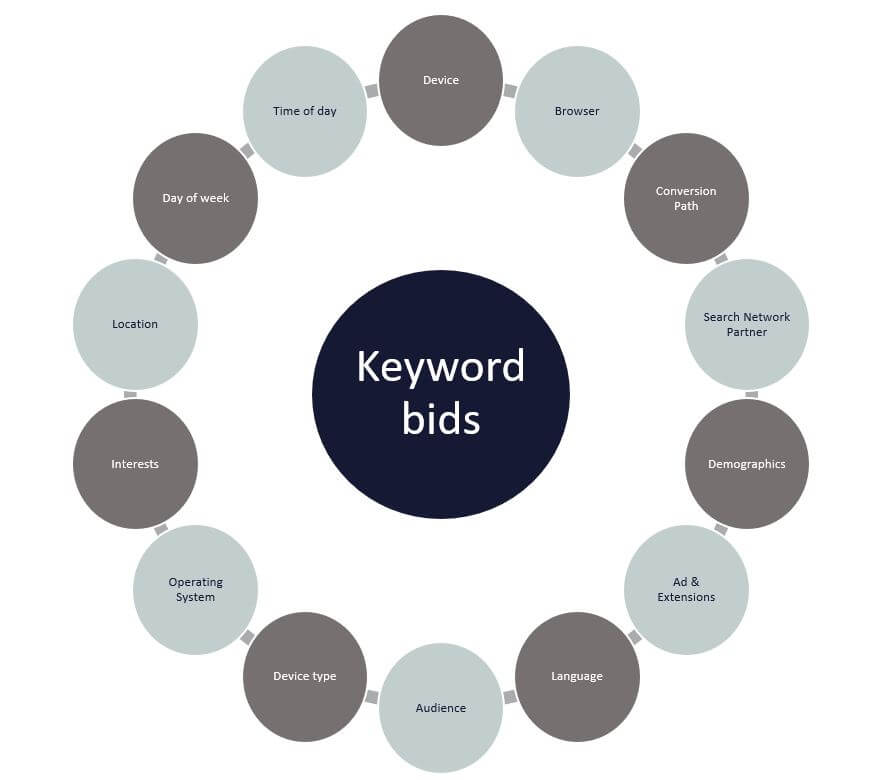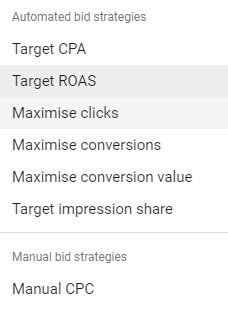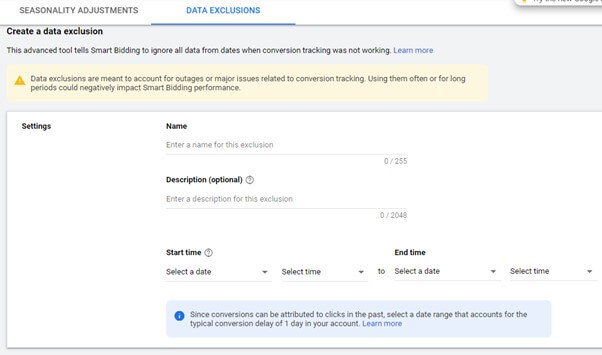Embracing Automated Bidding: How Not to Let it Flop
Around five or six years ago, automated bidding on Google Ads was seen as a dirty word in most PPC circles.
PPC managers love to have as much control over their PPC account as possible. But Google’s automated bidding algorithms have made considerable strides in the last few years. They get better and better every year.
If you’re still settings bids manually, then it may be time to test automated bidding. But wait, before you switch on automated bidding, there are some tips that you need to be aware of so that you can get the most out of automated bidding and not let it flop.

In this blog, we’ll give seven tips to help you get the most out of automated bidding and discuss the top two benefits of using automated bidding.
Two benefits of Automated bidding
Before we discuss the tips on getting the most out of Google Ads Automated bidding strategies, it is helpful to understand the benefits of switching to automated bidding.
If you’re still using manual bidding, then here are two reasons why you should switch to an automated bidding strategy.
To learn about five more ways that you can embrace automation within your Google Ads account, have a read of our blog on Google Ads automation.
Benefit 1: Auction time bidding
PPC advertising is a lot more complex than it used to be ten years ago. It used to be the case that PPC advertisers mainly had to choose a set of keywords, create ads for those keywords and then set the right bid for each keyword.

There are many more moving parts in Google Ads now, and with so many social platforms, the user journey has become a lot more complicated. Here are some of the things that determine how profitable a keyword will be:

PPC advertisers no longer have to set the right bid. There are a lot of variables to consider when it comes to biding.
For example, you must consider; the audience, gender, age group, location and device, in addition to the keyword that the user is searching for.
With all of this added complexity, there is only so much that a PPC advertiser can process and handle.
Automated bidding can process bids in real-time. This means that it can look at all the above factors and set a bid that is right for the specific auction. This is something that a human would not be able to do.
Benefit 2: Focus on other areas of the PPC account
Another advantage of using automated bidding is that the PPC manager’s time gains free time to focus on other areas of improving the account.
The PPC manager can focus on things they may not have been giving much time to when manually changing bids due to time constraints.
How many types of automated bid strategies are there?
There are a few types of automated bidding strategies. The automated bidding options that use conversions to help them optimise keyword bids are called SMART bidding.
At the time of writing, there are only two automated bidding strategies that are don’t fall under SMART bidding. These are the Maximise clicks and Target impression share automated bid strategies.
- Target CPA – Obtain as many conversions at a target cost per conversions.
- Target ROAS – Obtain as many conversions at a target return on ad spend.
- Maximise Clicks – Obtain as many clicks for a given budget.
- Maximise Conversions – Obtain as many conversions for a given budget.
- Maximise Conversion Value – Obtain as much conversion value for a given budget.
- Target Impression Share – Maintain a specific amount of impression share.

Tip 1: Align the bid strategy with business goals
Each campaign should have its own campaign goals. Without a campaign or a goal, you have no way of knowing what to optimise towards and what a successful campaign looks like.
Campaign goals should be identified before a campaign is created and not afterwards. As a starting point, think of the below:
- Budget
- Required sales/leads
- Keyword themes to target
- Maximum cost per lead or return on ad spend
Once you know your campaign goals, you can match them up with the bid strategy that is most likely to help you meet your campaign objectives.
For example, if you are running a brand campaign and want to appear on the top of search results, then you may choose the Target impression share bid strategy.
If you want to get as many leads as possible at a specific cost per lead, then maybe the target CPA bidding option is the way to go.
If you do not have an idea of what cost per lead you should be targeting and want to see how many leads you can get for a certain budget, then perhaps the maximise conversions bid strategy is a good starting point.
Either way, knowing your campaign goals beforehand will help you to choose the right bid strategy for you.
Tip 2: target something similar to what you were doing with manual bidding
If you are using manual bidding and want to test the impact of automated bidding, then try to keep the campaign goals as close as possible to what you were getting with manual bidding.
If you’re going to test target CPA bidding, set the same target CPA as the CPA you were getting with manual bidding.
If you’re testing Target ROAS, then set the same ROAS as what you were getting with manual bidding.
If you just want to get as many conversions for your budget, then when you choose the maximise conversion bid strategy, make sure you give it the same budget that the campaign was spending when you were doing manual bidding.
Keeping the goals as similar as possible to what you had when you were using manual bidding will show you whether automated bidding is outperforming manual bidding or not. If you give it different goals to what you were getting with manual bidding, then it won’t be a fair test.
The system will often give you recommendations on the goal that you should set for your automated bidding strategy based on historical data.

Tip 3: Give it time
When you started running a campaign whilst using manual bidding, it would have no doubt taken time to build up data and optimise your bids to improve the performance of the campaign.
Similarly, automated bidding needs time to test and learn what type of traffic does well and what type of traffic doesn’t.
When you first switch over to automated bidding, you may see a reduction in performance as the system starts to test and learn.
During this period, it can be tempting to tinker with the automated bidding by changing its goals or even switching it off. Don’t! You will have to wait it out. Just remember that the system is learning and will get better and better as time goes on.
The amount of time it takes for Google’s machine learning capabilities to come out of the learning phase depends on how much you’re spending.
On average, you should set aside two weeks for the learning phase. After this period, you should start seeing the automated bidding strategy performing a lot better.
Tip 4: Keep reviewing targets
Once you’ve gone through the learning phase, it is important to review the performance of each campaign to see if you can get more out of it while still staying profitable.
If a campaign is profitable, then you may be able to get more sales at a profitable rate by allowing the system to be more aggressive. This may mean telling the system to target a higher CPA, a lower ROAS or, in the case of maximising conversions, just to spend more. This will allow the system to go after more users and potentially secure a lot more conversions.
Once you’ve increased the aggression on your automated bid strategy, give it a few weeks to run. Then review the uplift in clicks and conversions.
If it is still profitable and you have seen an increase in conversions, test increasing the aggression on the automated bid strategy.
If you make large changes to the automated bidding strategy, you risk putting it back into the learning phase. However, you can make minor tweaks without putting it back into learning mode.
Tip 5: Choose the right conversion actions
SMART bidding optimises the conversion actions that you have set to be reported in the Conversions column.
If there are any Conversions that you don’t want the system to optimise towards, then you will need to make the system aware of this.
For example, if you’re tracking both online sales and newsletter subscriptions as conversions, then the system will count a conversion from either of these two as worth the same.
If you want the system to optimise towards increasing online sales, then you will need to let the system know which conversion actions to optimise towards.
You can tell the system which conversion actions to optimise by selecting the appropriate conversion actions in the campaign settings.

Tip 6: Exclude dates when conversion issues occur
It’s not uncommon when changes are being made to website for things to break. Suppose your conversion tracking breaks for whatever reason, and you have a period in time where you’re not recording conversions. In this case, this will impact the decisions being made by the automated bidding system.
Automated bidding looks at historical data to test and learn what kind of traffic performs well. If you have a period when you were getting conversions but weren’t being recorded in Google Ads, this will throw off the machine learning. It could result in your campaigns not performing as well.
You can make Google Ads aware of any times when your automated bidding broke in the Data Exclusions section. This can be found by clicking on ‘Tools & Settings’ on the top right and then on ‘Bid Strategies’.
From here, click on ‘Advanced Controls and then on ‘Data Exclusions’. In this, you can add the dates where you don’t want Google’s machine learning to take any learnings from.

Tip 7: Make the system aware of sudden changes in conversion rate
Google’s machine learning algorithms can get an idea of performance-based on seasonality by looking at historical data.
The algorithms favour recent performance more than less recent performance. This means that if your conversion rate starts to change in the last few days, the machine learning algorithms should notice this and change your bids accordingly.
As intelligent and quick as Google’s machine learning algorithms are, they still can’t react fast enough to sudden changes like a one-day flash or something like a sudden uplift in conversions due to Black Friday.
Luckily, Google has added a section in Google Ads where PPC advertisers can tell the system to expect a change in conversion rate.
This can be found by clicking on ‘Tools & Settings’ on the top right and then on ‘Bid Strategies’. From here, click on ‘Advanced Controls and then on ‘Seasonality Adjustments’.
In this section, you can tell Google’s machine learning what dates to expect an increase or decrease in conversion rate.

Wrapping up
For those already using automated bidding within Google Ads, here are some tips to help you to get the most out of them.
For those still using manual bidding, you should know that automated bidding gets better and more intelligent every year.
If you tried automated bidding a while ago and were disappointed by the performance, then it may be worthwhile giving it another go while actioning the tips in this blog post.
Perhaps the biggest misconception with automated bidding is that it is a ‘set it and forget it’ feature. Automated bidding still needs to be monitored, tweaked, given the right data, and guided with seasonality adjustments.
Embracing automated bidding shouldn’t be seen as completely giving up all control. Instead, it is a way to automate the basic elements of bidding while you focus on the more advanced seasonality, strategy and data quality elements of bidding. Click here to learn more about Google Ads automation and machine learning.